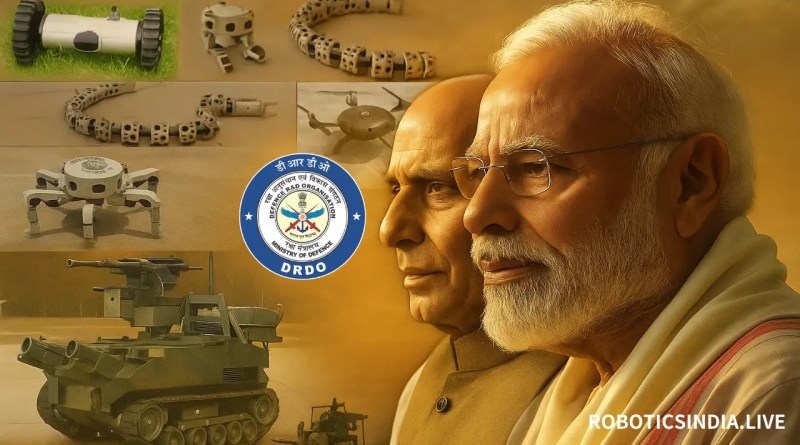What is DRDO Centre for AI and Robotics?
What is DRDO Centre for AI and Robotics?
The Defence Research and Development Organisation (DRDO) plays a vital role in India’s technological self-reliance. One of its key research hubs is the Centre for Artificial Intelligence and Robotics (CAIR), located in Bangalore, Karnataka. Established in October 1986, CAIR focuses on artificial intelligence, robotics, secure communication, and command-and-control systems. It serves as DRDO’s primary laboratory for defense information and communication technology (ICT).
CAIR was founded by Arogyaswami Paulraj and later expanded in November 2000, when several R&D groups working on command, control, communications, and intelligence (C3I) were merged with it. Today, CAIR employs over 300 staff, including 150 scientists. The lab often collaborates with other DRDO facilities, the armed forces, and Indian industry partners.
Core Objectives and Mission
The mission of CAIR is to design and develop intelligent, dependable, and secure systems for India’s defense sector. It focuses on:
-
AI-based decision-support tools.
-
Robotics for land, air, and underwater applications.
-
Multi-agent coordination frameworks for collaborative missions.
-
High-speed secure communication networks.
In addition to military programs, CAIR develops technologies for civilian uses, such as inspection robots and assistive mobility devices.
Major Robotics Projects by CAIR
1. Unmanned Ground Vehicles (UGVs)
MUNTRA UGV – DRDO’s first unmanned tracked vehicle, based on the BMP infantry vehicle platform. It can operate in tele-operated or autonomous modes and supports missions like surveillance and mine clearance. It uses electro-optical sensors, GIS-based planning, and multiple fail-safes.
Miniature UGV (MINIUGV) – A 28 kg tracked robot for urban surveillance and counter-insurgency. It climbs stairs, negotiates steep inclines, and streams live video from a 150 m wireless link.
Mini MULE – A hybrid robot with four legs ending in motorized wheels. This concept combines the terrain adaptability of legs with the speed of wheels.
Omni Hexbot – A six-legged robot with omni-directional movement, designed for reconnaissance on uneven terrain.
2. Specialized Robotics Systems
Snake Robot – A 1.5 m flexible robot with 14 active joints. It moves through rubble, pipes, and tunnels using lateral undulation and sidewinding. A camera and ultrasonic sensors help in search-and-rescue and tunnel inspection.
Wall-Climbing Robot – Uses suction to adhere to vertical surfaces. Equipped with a pan-tilt camera, it can inspect walls, ship hulls, and building exteriors.
Autonomous Search Robot (ASR) – An indoor robot that uses LiDAR and RGB-D cameras to map unknown spaces in 3D while navigating obstacles.
Robot Sentry (RoboSen) – A patrol robot with GPS, compass, and laser rangefinders. It can follow preset routes or be remotely controlled for perimeter security.
Non-Destructive Testing Robots – Robotic arms for inspecting aircraft composite parts, such as those on the Light Combat Aircraft Tejas.
3. Explosive Ordnance Disposal (EOD) Robots
Daksh – A remote-controlled bomb disposal robot. It can handle IEDs, tow suspicious vehicles, climb stairs, and use a high-pressure water jet to neutralize explosives. Over 90% of its components are indigenous. The Indian Army and police forces have deployed more than 200 units.
4. Naval and Underwater Robotics
Autonomous Underwater Vehicle (AUV) – Designed by DRDO’s NSTL lab. Used for intelligence, surveillance, and reconnaissance. It can deploy mines, torpedoes, or sensors underwater.
ROVs and Unmanned Surface Vessels – Developed for inspection, salvage, and coastal surveillance.

Communication and Control Systems for Robotics
CAIR also develops C3I (Command, Control, Communications, and Intelligence) systems that enable robots and defense networks to work together:
-
Wireless Message Transfer Unit (WMTU) – Transfers IP data over military radios.
-
Time Division Multiplex Exchange (TIDEX) – A digital telephone exchange for army networks.
-
Secure Operating Systems – Protect defense data and communications.
Read More : Top 10 Robots created by DRDO India
Advanced AI and Multi-Agent Robotics
CAIR’s Multi-Agent Robotics Framework (MARF) is a major step toward collaborative robot teams. This system will allow multiple heterogeneous robots—wheeled, legged, or aerial—to share information, coordinate missions, and map environments together.
Artificial intelligence plays a central role. CAIR is integrating machine learning, computer vision, and sensor fusion to make robots more autonomous and mission-ready.
Global Comparisons and Future Roadmap
Globally, defense robotics leaders include the United States (DARPA projects), Russia, Israel, and Japan. DRDO’s approach is unique because it focuses on indigenous, cost-effective solutions tailored to India’s terrain and defense needs.
Looking ahead, CAIR aims to:
-
Increase autonomy in all platforms.
-
Develop swarms of collaborative robots.
-
Enhance hybrid locomotion systems.
-
Expand civilian applications of defense robotics technology.
Read More : New CSROV Robot created by DRDO displayed at the 108th National Science Congress
Conclusion
What is DRDO Centre for AI and Robotics? It is India’s premier defense laboratory for developing secure AI-driven robotics and communication systems. From UGVs like MUNTRA to snake robots for rescue operations, and from Daksh bomb disposal units to autonomous underwater vehicles, CAIR is shaping the future of India’s defense capabilities. With its focus on AI, secure communications, and indigenous development, CAIR is not just keeping pace with global trends—it is creating solutions uniquely suited to India’s strategic and operational requirements.
Follow Robotics India on Instagram



